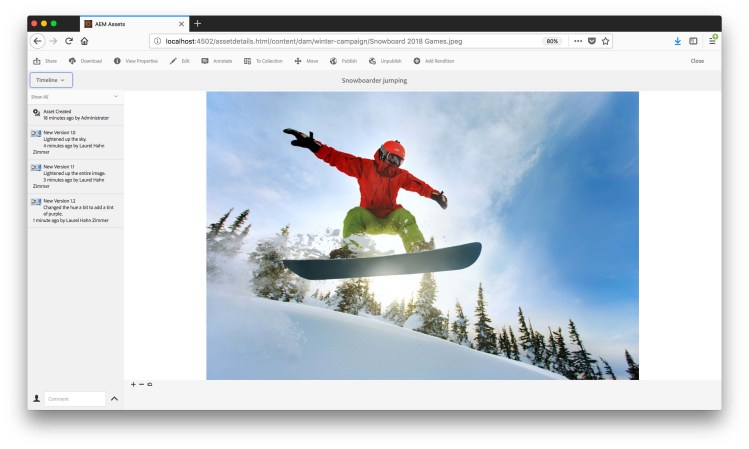Watch all the Transform 2020 sessions on-demand here.
Adobe today announced a series of new features for marketers and companies using its content and asset management solution Experience Manager. These additions draw on the smarts of its AI system Adobe Sensei and will be available next month. Features include smart cropping, smart tags that predict and automatically add image metadata, and a quick way to liven up old PDF forms.
Smart cropping allows a marketer to zoom in on an area of interest based on the display screen, so a retailer could show shoppers the entire outfit on a desktop computer but zoom in on their best-selling T-shirt or shorts on smartphones. Smart cropping is pretrained with Adobe Stock imagery and can be made smarter with images from a vendor’s product image library.
“It’s a manual process historically for someone to do that,” Adobe senior director for strategy and product marketing Loni Stark told VentureBeat in an interview. “With Experience Manager in the latest release, we have machine learning that guides and aids marketers to be able to do this.”

June 5th: The AI Audit in NYC
Join us next week in NYC to engage with top executive leaders, delving into strategies for auditing AI models to ensure fairness, optimal performance, and ethical compliance across diverse organizations. Secure your attendance for this exclusive invite-only event.
There’s also a tool to match customer personas with content for custom webpages, and AI that pulls text and fields from old PDF forms to create more attractive, modern-looking forms.
“It will literally take your PDF, generate a much more engaging form, and then as a marketer, as a form user, as a customer communications person, you can go and adjust it,” Stark said.
The new features work more closely with Adobe’s other software offerings, like Creative Cloud. Adobe Experience Manager (AEM) is part of the Experience Cloud.
Modifications to Experience Manager are in part informed by responses to a survey Adobe conducted of roughly 1,000 consumers in the United States.
The survey found that consumers spend 7.8 hours a day looking at digital media — a figure that jumps to more than 11 hours for teenagers. Respondents said personalization was of moderate to high importance, an indication, Stark said, that content personalization has become a major selling point for customers.
“It’s not just a nice touch that a brand understands my preferences. Personalized content is now becoming more the expectation and really important,” she said.
While personalization is a key factor, it can cross a line and get creepy. Nearly 30 percent of consumers surveyed said they will walk away from a purchase if the personalization feels too intrusive.
The survey provided no definition of creepy, but Stark said she’s heard some examples from brands.
“If I’m shopping on a site and I haven’t really logged in or signified it then perhaps it is too creepy if it says ‘Hi, (insert name here), we saw that the last three visits you were looking at this item, are you ready to buy?'”
A survey by Adobe Analytics earlier this year found that 22 percent of smart speaker owners shop using voice commands. The Adobe Analytics Cloud launched services for tracking voice app performance last May.
The consumer survey that informed changes to Experience Cloud found 4 percent of shoppers used an AI assistant or smart speaker like an Amazon Echo to make purchases. As these grow in popularity, the next version of the survey will definitely include more about voice shopping, Stark said.


